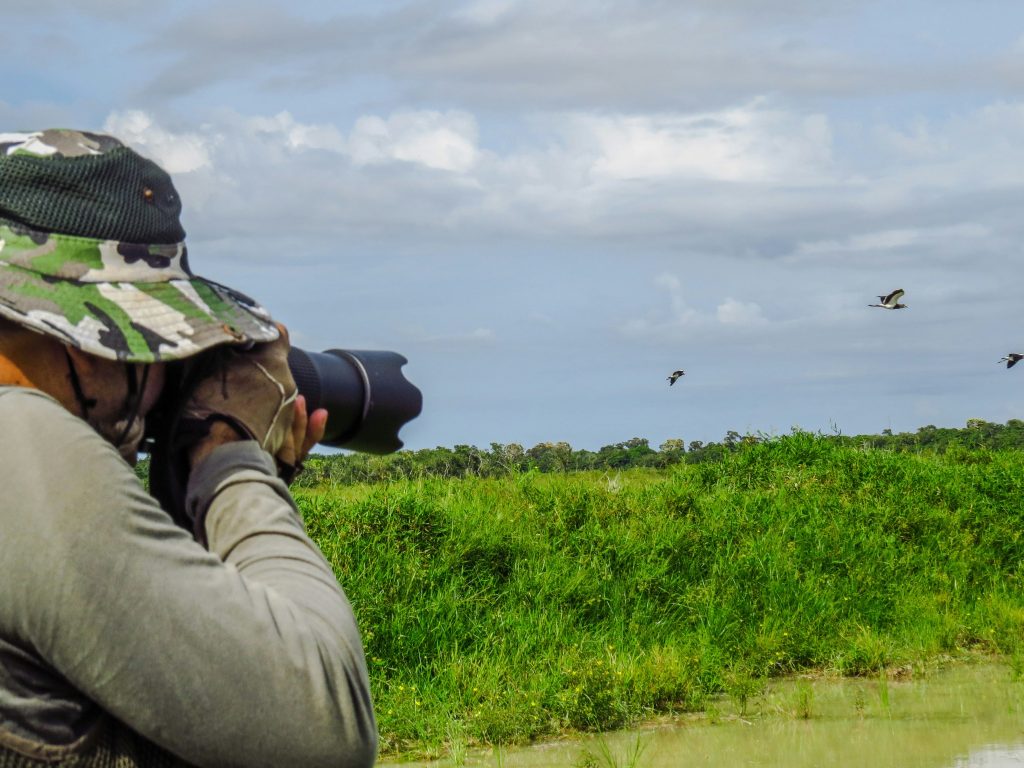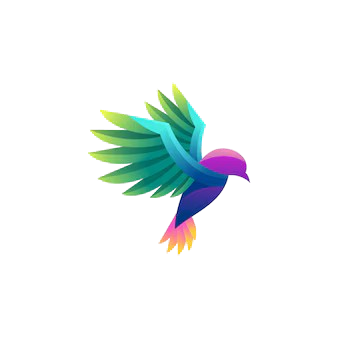
Birdwatching, or birding, is more than just a hobby; it’s a way to connect with nature, learn about biodiversity, and enjoy the outdoors. This activity has captured the hearts of millions worldwide, offering a peaceful and educational escape from the hustle and bustle of everyday life. This comprehensive guide will explore the history of birdwatching, essential gear, bird identification techniques, prime birdwatching locations, and practical advice for beginners.
The Historical Evolution of Birdwatching
Birdwatching has its roots in ancient civilizations where observing birds was primarily for practical reasons such as hunting or predicting weather. However, the appreciation of birds as a leisure activity and scientific pursuit began in earnest during the Renaissance. Naturalists like John Ray and Carl Linnaeus laid the groundwork for modern ornithology with their systematic studies.
The 19th century marked a turning point with the publication of John James Audubon’s “The Birds of America,” which inspired widespread interest in birds. Audubon’s detailed illustrations and observations highlighted the beauty and diversity of avian life. The formation of birdwatching societies, like the Audubon Society in the United States and the British Ornithologists’ Union in the UK, further cemented birdwatching as a popular pastime and a conservation effort.
In the 20th century, technological advancements such as high-quality binoculars and comprehensive field guides made birdwatching more accessible and enjoyable. Today, birdwatching is a global phenomenon, with millions of enthusiasts contributing to citizen science and conservation efforts.
Essential Birdwatching Gear
While birdwatching can be enjoyed with minimal equipment, having the right tools can enhance the experience. Here are some essential items:
- Binoculars: A quality pair of binoculars is crucial for birdwatching. Opt for binoculars with 8x or 10x magnification and a 42mm objective lens for a balance of clarity and light-gathering capability.
- Field Guide: A field guide helps identify birds by providing detailed descriptions, illustrations, and range maps. Recommended guides include “The Sibley Guide to Birds” and the “National Geographic Field Guide to the Birds of North America.”
- Notebook and Pen: Keeping a journal of your sightings helps track your observations and improve your birdwatching skills. Record details like species, location, date, and behavior.
- Camera: A camera with a good zoom lens allows you to capture detailed images of birds, which can aid in identification and sharing your experiences.
- Bird Call App: Apps like Merlin Bird ID and Audubon Bird Guide can play bird calls and help identify species based on their vocalizations.
- Comfortable Clothing: Wear neutral-colored clothing to blend into your surroundings. Dress in layers to accommodate changing weather conditions and wear sturdy footwear for various terrains.
Techniques for Identifying Birds
Accurately identifying birds requires keen observation and some knowledge. Here are techniques to help you become proficient:
- Observe Size and Shape: Note the bird’s size and shape compared to common birds. Focus on its silhouette, beak shape, wing length, and tail shape.
- Examine Plumage and Color Patterns: Pay attention to the bird’s colors and markings. Look for distinctive features like wing bars, eye rings, and tail patterns.
- Study Behavior: Birds exhibit unique behaviors that aid in identification. For example, woodpeckers peck at tree trunks, while warblers flit among leaves.
- Listen to Vocalizations: Bird songs and calls are distinctive. Learning to recognize these sounds can significantly aid in identification. Use apps or recordings to familiarize yourself with common bird calls.
- Consider Habitat and Range: Birds are often found in specific habitats. Knowing which birds are common in your area and their preferred environments can narrow down identification options.
- Use Field Guides and Apps: Cross-reference your observations with field guides or birding apps, which provide comprehensive information, including illustrations, photos, and maps.
Prime Birdwatching Locations
Birdwatching can be enjoyed almost anywhere, but certain locations are renowned for their exceptional bird diversity and viewing opportunities. Here are some top birdwatching destinations:
- The Everglades, USA: This unique ecosystem in Florida is home to a vast array of bird species, including wading birds like herons, egrets, and ibises. The Everglades are also a crucial habitat for the endangered snail kite.
- Cape May, USA: Located in New Jersey, Cape May is a renowned birding hotspot, especially during the fall migration. The area’s diverse habitats, including beaches, wetlands, and forests, attract a wide variety of species.
- Kruger National Park, South Africa: This famous wildlife reserve is not only known for its big game but also its impressive birdlife. Over 500 bird species have been recorded here, making it a paradise for birdwatchers.
- Pantanal, Brazil: The Pantanal is the world’s largest tropical wetland and a biodiversity hotspot. Birdwatchers can spot a multitude of species, including the striking hyacinth macaw and the elusive jaguar.
- Rift Valley, Kenya: The Great Rift Valley is a prime birdwatching destination, with its lakes and highlands providing habitat for a myriad of bird species. Lake Nakuru, in particular, is famous for its flamingo populations.
- Iberá Wetlands, Argentina: This lesser-known gem is a haven for birdwatchers, with over 350 species recorded. The Iberá Wetlands offer excellent opportunities to see the jabiru stork, scarlet-headed blackbird, and many more.
Tips for Beginner Birdwatchers
Starting a new hobby can be daunting, but birdwatching is a welcoming and accessible activity for all ages. Here are some tips to help beginners get started:
- Start with Local Birds: Begin by familiarizing yourself with the common birds in your area. Visit local parks, nature reserves, and your backyard to observe and identify these species.
- Join Birdwatching Groups: Birdwatching clubs and groups offer a wealth of knowledge and a sense of community. Joining group outings can provide valuable learning experiences and introduce you to new birdwatching locations.
- Participate in Bird Counts and Surveys: Citizen science projects like the Christmas Bird Count and the Great Backyard Bird Count offer opportunities to contribute to bird conservation efforts while honing your birdwatching skills.
- Use Birdwatching Resources: Take advantage of the numerous resources available, such as field guides, mobile apps, and online forums. Websites like eBird and the Cornell Lab of Ornithology provide extensive information and tools for birdwatchers.
- Practice Ethical Birdwatching: Respect wildlife and their habitats by observing birds from a distance and minimizing disturbances. Follow local regulations and guidelines to ensure that your birdwatching activities have a positive impact on the environment.
- Keep a Bird Journal: Document your observations, including the species, location, date, and any notable behaviors. A bird journal helps track your progress and can become a cherished record of your birdwatching experiences.
- Stay Patient and Persistent: Birdwatching can sometimes require long periods of waiting and observing. Stay patient, and enjoy the process of being immersed in nature.
The Benefits of Birdwatching
Birdwatching offers numerous benefits, both for individuals and for the environment. Here are some of the key advantages:
- Connection to Nature: Birdwatching provides a deep connection to the natural world, fostering an appreciation for wildlife and the environment. It encourages people to spend time outdoors and observe the beauty of nature.
- Stress Relief: Spending time in nature and observing birds can be a relaxing and meditative experience. Birdwatching helps reduce stress and promotes mental well-being.
- Physical Activity: Birdwatching often involves walking and exploring various habitats, providing a gentle form of exercise. It encourages physical activity and can be a great way to stay active.
- Educational Value: Birdwatching is a continuous learning experience. It enhances knowledge of bird species, behaviors, and ecosystems. It also promotes curiosity and scientific inquiry.
- Conservation Awareness: Birdwatchers often become advocates for conservation. By observing birds and their habitats, they become more aware of environmental issues and the need to protect natural areas.
- Social Interaction: Birdwatching can be a social activity, providing opportunities to meet like-minded individuals and share experiences. Birdwatching groups and events foster a sense of community and camaraderie.
Birdwatching and Conservation
Birdwatching plays a crucial role in conservation efforts. Birdwatchers often contribute valuable data to scientific studies and monitoring programs, helping to track bird populations and assess the health of ecosystems.
Organizations like the Audubon Society, BirdLife International, and the Royal Society for the Protection of Birds (RSPB) rely on data collected by birdwatchers to inform conservation strategies and protect critical habitats. By participating in citizen science projects and advocating for bird-friendly policies, birdwatchers can make a significant impact on the preservation of avian species.
Conclusion
Birdwatching is a delightful and enriching hobby that offers a deeper connection with nature and endless opportunities for discovery. Whether you’re observing the vibrant plumage of a songbird in your backyard or marveling at the diversity of species in a remote wetland, birdwatching provides a sense of wonder and appreciation for the natural world.
